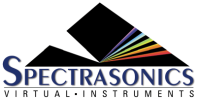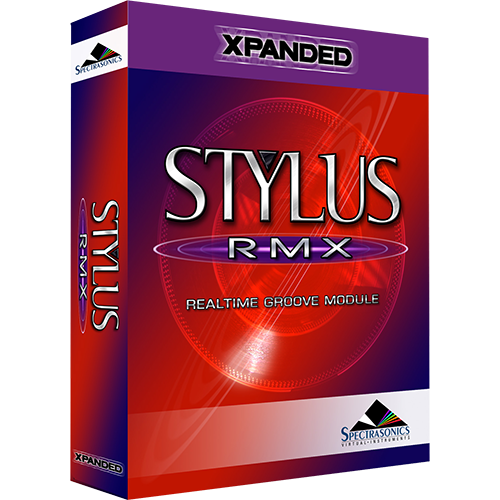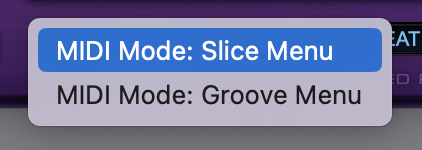
Slice Menu Mode works with the current Groove Element that appears in the Element Name Display.
This MIDI mode is ideal when you want to have a single groove with all of its slices presented across the keyboard, with each slice triggered by an independent note. This approach allows the maximum flexibility to edit the pattern and feel of the groove in your host application.
One of the key tutorials is the MIDI and Trigger Mode video—be sure to check it out!
SLICES AND GROOVE CONTROL®
All of the Groove Elements within Stylus RMX appear to the software plug-in as sliced audio files.
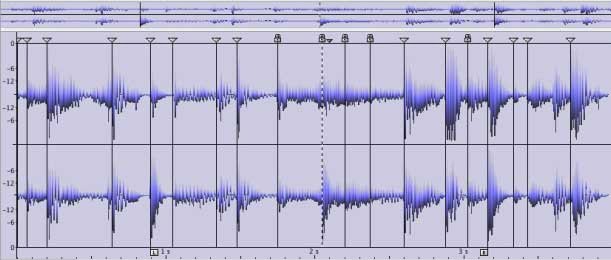
The timing information stored in the sliced audio file determines how the slices are triggered upon playback by the SAGE engine—according to the current tempo in your host application. Since there is no real-time DSP time-stretching applied to groove elements during playback, and the proprietary Groove Control® sound development method we employ produces extremely musical results with no artifacts, Stylus RMX is able play grooves back at a remarkably wide range of tempos, without sacrificing sound quality or changing the pitch.
NOTE: Sound quality results will vary significantly with imported audio and REX libraries, since they were not created using the proprietary Groove Control® system that Spectrasonics uses. Core Library and official SAGE Xpanders™ will always produce the most consistent and highest quality results.
TRIGGER MODES IN SLICE MENU MODE
In Slice Menu mode, Stylus RMX always responds immediately to MIDI Notes, regardless of the Trigger Mode setting. Using the different Trigger Mode options affects only how grooves are auditioned when using the RMX Play buttons or mouse selection of Groove Elements in the Browser.
MIDI FILES
In Slice Menu Mode, a MIDI file is available to drag from the Browser page to the corresponding track in your host. In the MIDI file sequence, there is a MIDI note which corresponds to correctly trigger each audio slice of the groove.
If your host has the ability to display the MIDI file’s name once it’s been dragged-and-dropped onto a MIDI track, you’ll notice that the name of the file exactly matches the name of the Groove Element. Seeing a chromatic set of MIDI notes and the exact name of the file indicates that a Groove was dragged-and-dropped in Slice Menu mode.
SLICE MAPPING
In Slice Menu Mode, RMX plays a single slice of a groove when a single MIDI note is triggered.
All the Slices of the Groove are usually played back chromatically starting at MIDI note 36/C1.
A Slice Menu MIDI file is essentially the same type of MIDI file as a Groove Control® MIDI file.
However, this type of “Sliced audio-style” MIDI file is quite different than a “GM-style” MIDI file, that would have traditional drum kit programming and mapping. The sliced audio MIDI file will only correspond to its original Groove Element. Using this MIDI file to trigger other Elements or Kits will not produce predictable results or be compatible with GM MIDI drum tracks.
Typically, a piano-roll/matrix style MIDI editor view would look something like this:
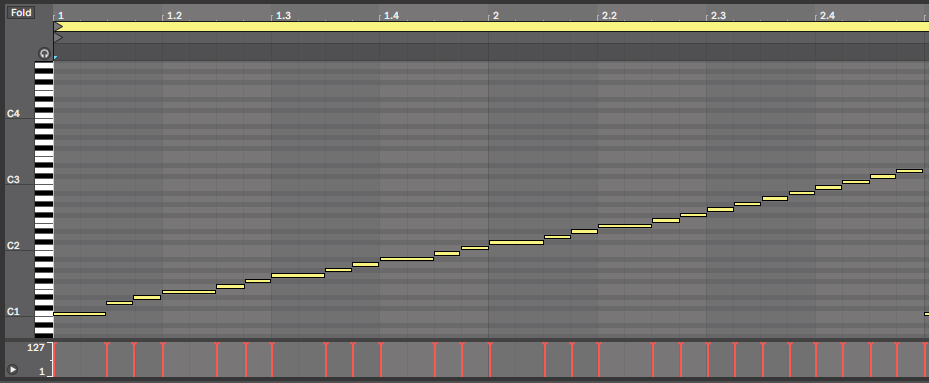
EDIT GROUPS
Creating Edit Groups in Slice Menu Mode results in Edit Groups that can contain:
- Slices of a predetermined rhythmic value using the Auto-Assign feature
- Any combination of Slices from a single groove element by creating a custom Edit Group
- Any combination of Slices from multiple groove elements in the same Suite, by creating a custom Edit Group
Edit Groups give you incredibly powerful control over the sonic character of Grooves.
MEMORY USAGE
In Slice Menu Mode, only the selected Groove Element and the one below it in the Element column of the Browser are loaded into RAM. Slice Menu mode is much less demanding on RAM than Groove Menu mode. This is one of the reasons Slice Menu Mode is the default setting.
